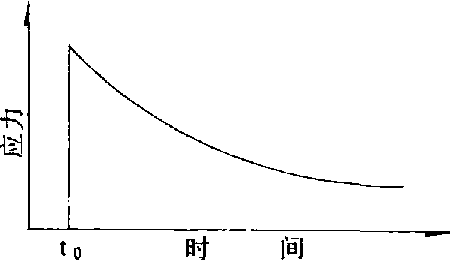松弛relaxation
在木构件上保持恒定变形而引起木构件内部应力随时间延续而逐渐减小的现象。松弛曲线如图所示。当松弛时,随时间的进展,弹性、迟延弹性和粘性等成分的大小被改变,但总变形是保持恒定。最初的总变形是弹性的,随时间的延续,弹性变形也随迟延弹性和粘性成分的反应而减小,在任何特定时间,三种变形成分的总和是恒定的。松弛和蠕变是木材表现出应力应变关系随时间而变化的现象,其区别在于可变量不同。经试验,开始在木构件上需施加高的荷载使产生变形,在保持变形恒定的情况下经数月时间后应力降低至原有值的60~70%。松弛同样明显地受温度和水分的影响。

应力与以时间为函数的关系
松弛relaxation
在木构件上保持恒定变形而引起其内部应力随时间延续而逐渐减小的现象。松弛和蠕变是木材表现出应力应变关系随时间而变化的现象,其区别在于可变量不同。经试验,开始在木构件上需施加高的荷载使产生变形,在保持变形恒定情况下,经数月时间后应力降低低至原有值的60%~70%。松弛同样明显地受温度和水分的影响。